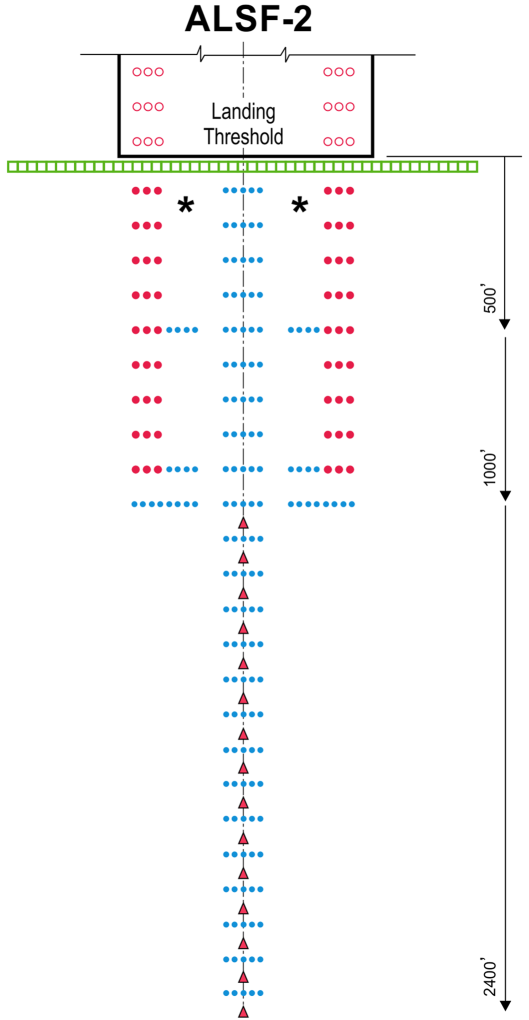
The ALSF-2 is an approach lighting system (ALS), which provides the basic means to transition from instrument flight to visual flight for landing. Operational requirements dictate the sophistication and configuration of the approach light system for a particular runway.
The ALSF-2 provides visual information on runway alignment, height perception, roll guidance, and horizontal references for Category II/III instrument approaches. ALS are a configuration of signal lights starting at the landing threshold and extending into the approach area a distance of 2400-3000 feet for precision instrument runways.
A typical ALSF-2 system consists of 247 steady burning lights: including green threshold lights (49 lights), red side row-bar lamps (9 rows, 54 lamps), and high intensity steady burning white lights (144), plus an additional 15 flashing lights commonly referred to as flashers. The flashers flash in sequence starting with the flasher farthest from the runway and ending with the flasher closer to the runway threshold. The lights are spaced at 100' intervals from the runway threshold outward to 2400'. Systems include sequenced flashing lights, which appear to the pilot as a ball of light traveling towards the runway at high speed (twice a second) and provide visual guidance for all landing categories (CAT I, CAT II, and CAT III).
Last updated:

